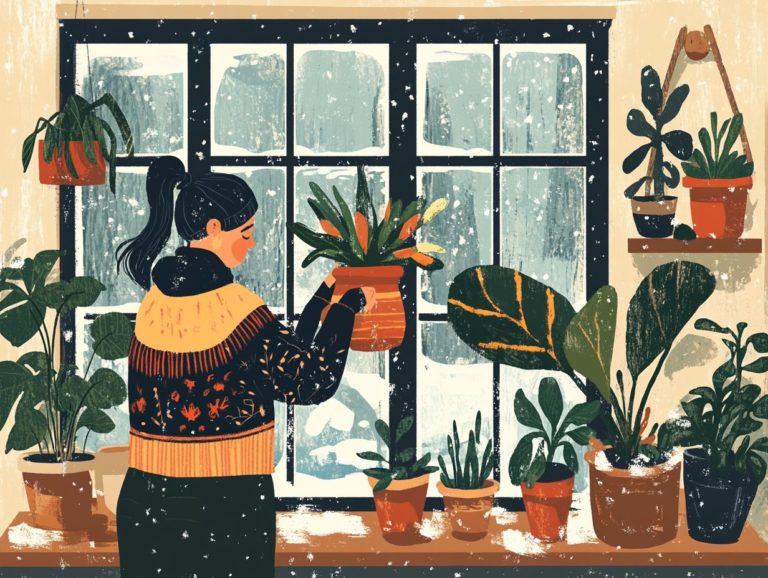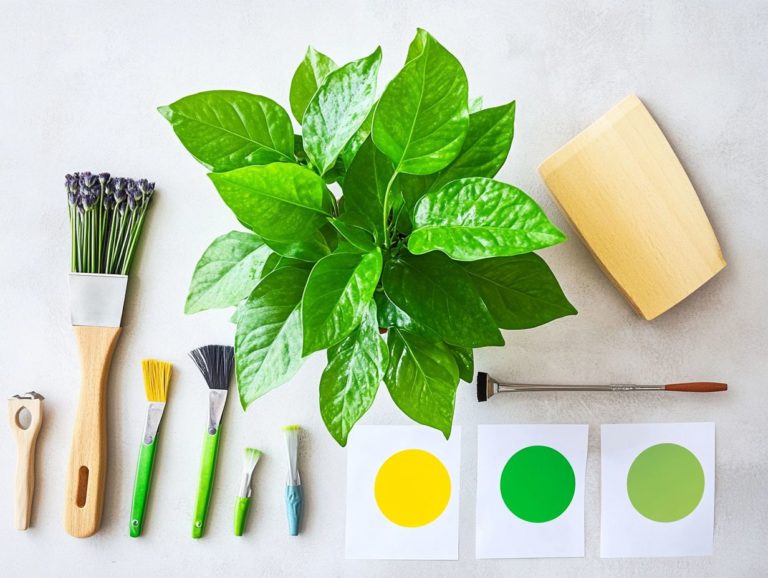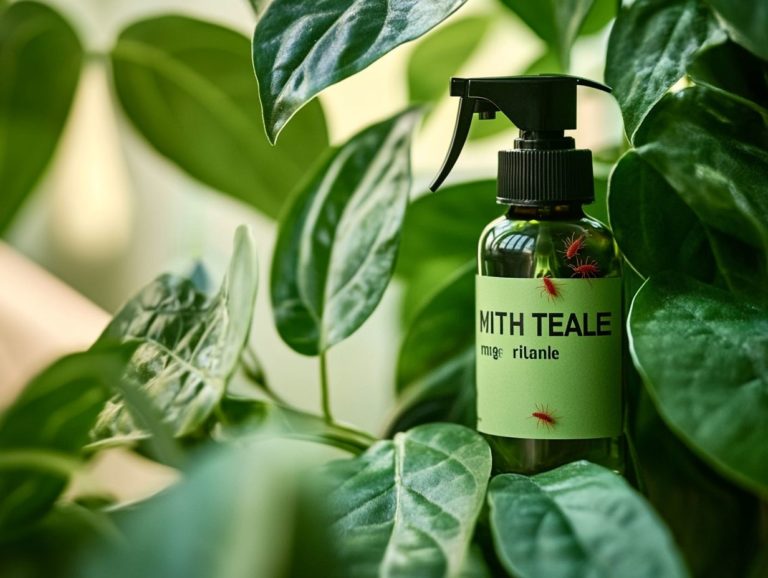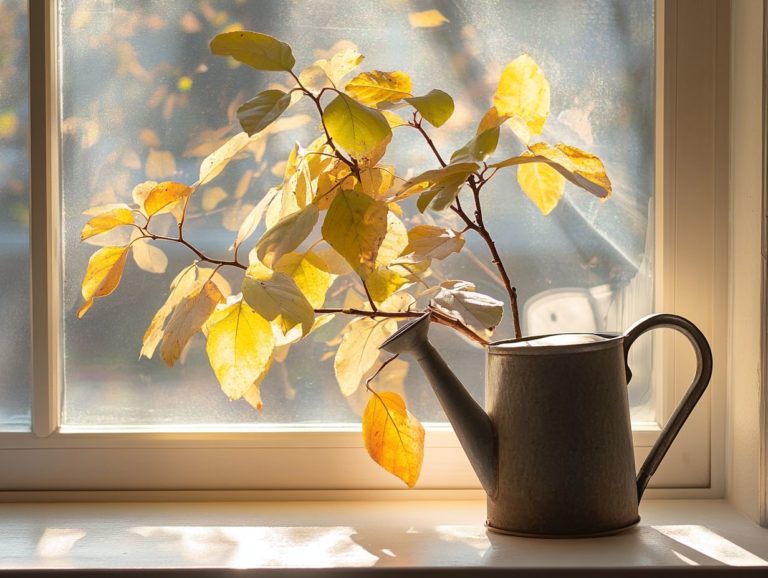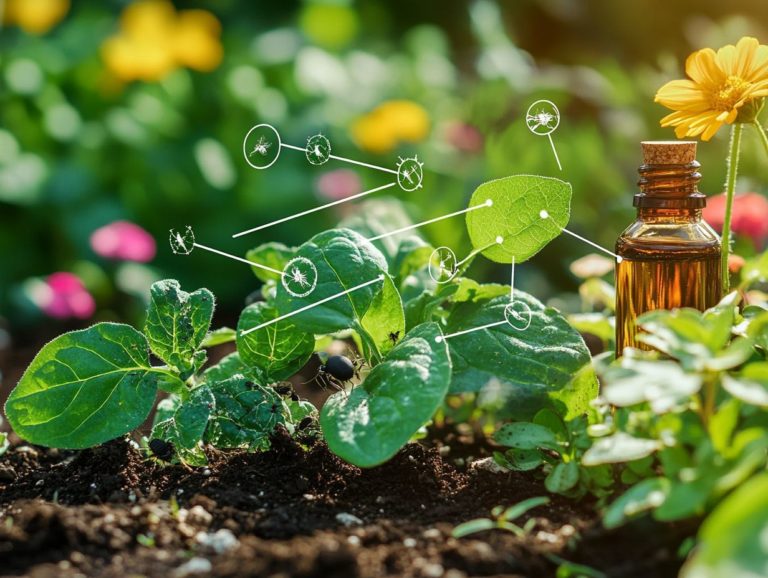Common Plant Problems: Your Quick Guide
Healthy plants form the foundation of vibrant gardens and inviting indoor spaces. Yet, they can encounter various challenges along the way.
This guide will illuminate the essential aspects of plant health, equipping you to identify common problems and their signs. You will uncover proactive strategies to keep your plants flourishing, alongside effective solutions for addressing any issues that may arise.
You will also find resources to assist you in your quest for knowledge and support.
Get ready to give your plants the care they deserve!
Contents
Key Takeaways:
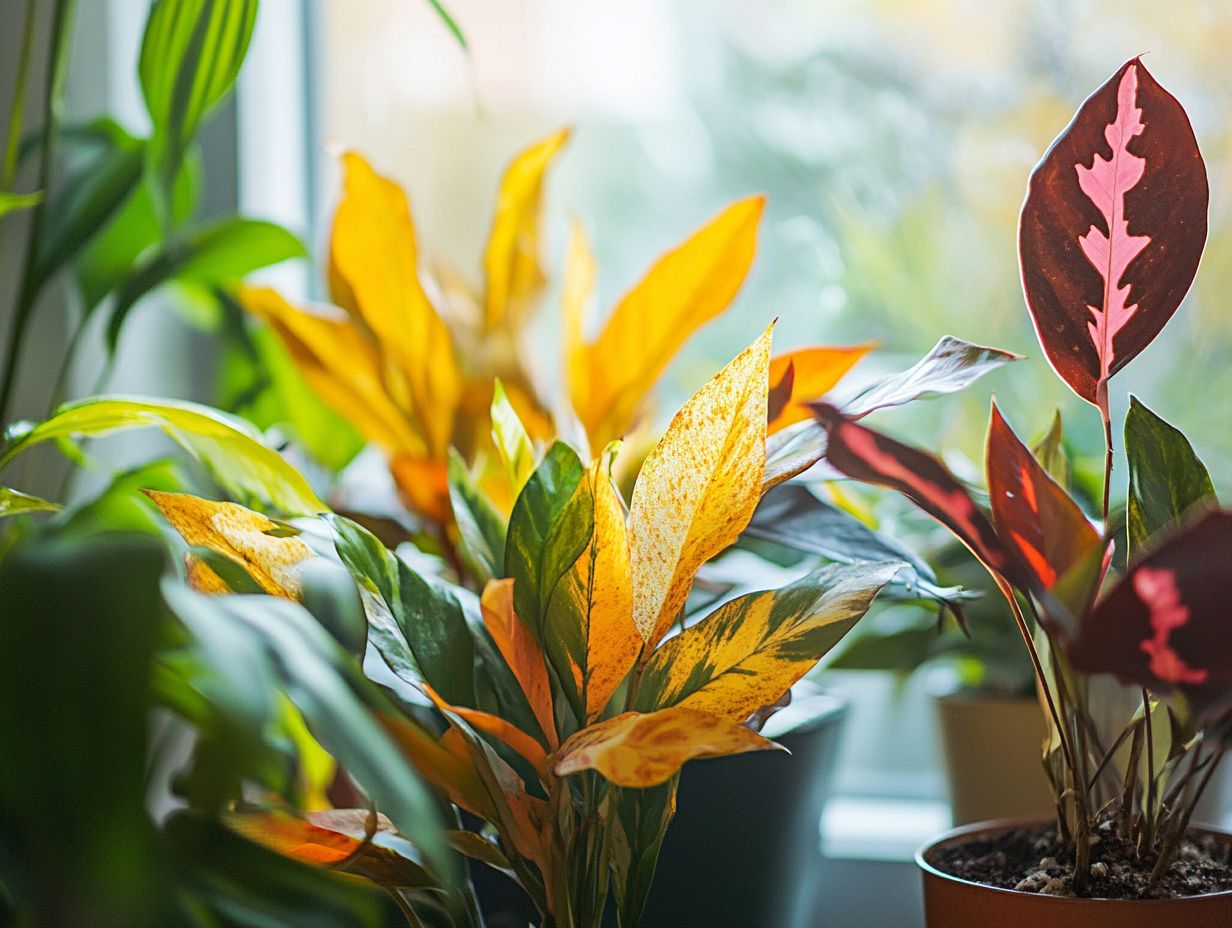
- Regularly inspect your plants for signs of distress such as discoloration, wilting, and pests.
- Provide proper care like watering, fertilizing, and pruning to prevent problems.
- Seek help from gardening experts, plant clinics, or online forums when you face issues.
Understanding Plant Health
Understanding plant health is essential for keeping your indoor plants vibrant. It promotes optimal growth and vitality. A multitude of factors plays a role in this, including sufficient sunlight exposure, proper watering techniques, and a consistent humidity level.
You may notice various issues that signal your plants’ overall health, such as yellowing leaves, dropping foliage, or distorted and weak growth. By tackling these concerns promptly, you can create a flourishing indoor environment that showcases your green thumb.
Identifying Plant Problems
Identifying plant problems is key for anyone who loves vibrant houseplants. Early detection can save your plants from serious damage.
Look for yellowing leaves, which may indicate nutrient deficiencies or overwatering. Dropping leaves often signal stress or pest issues.
Watch out for fungal diseases like powdery mildew and root rot. These can seriously harm your plants if not treated quickly.
Signs and Symptoms to Look Out For
When tending to your houseplants, it’s essential to recognize specific signs that point to potential issues. Take note of yellowing leaves, which often hint at watering problems or nutrient deficiencies.
Other telltale signs include dropping leaves, distorted growth, and weak development. Each of these can stem from environmental factors like humidity and sunlight exposure.
For example, yellowing leaves might indicate overwatering, which can lead to root rot and hinder nutrient uptake. On the flip side, not watering enough can also result in leaves dropping.
If you notice distorted growth, it could be a sign of pest infestations or inadequate light. This suggests that you might need insecticidal soap, a soap that kills pests without harming the plant, or a simple repositioning to a sunnier spot.
Weak growth is often a red flag for nutrient shortages, signaling that a boost of fertilizer may be in order. To keep your plants thriving, practice proper watering techniques, routinely check for pests, and ensure they receive the right amount of sunlight. For more detailed information, refer to this quick guide to common indoor plant issues.
Preventing Plant Problems
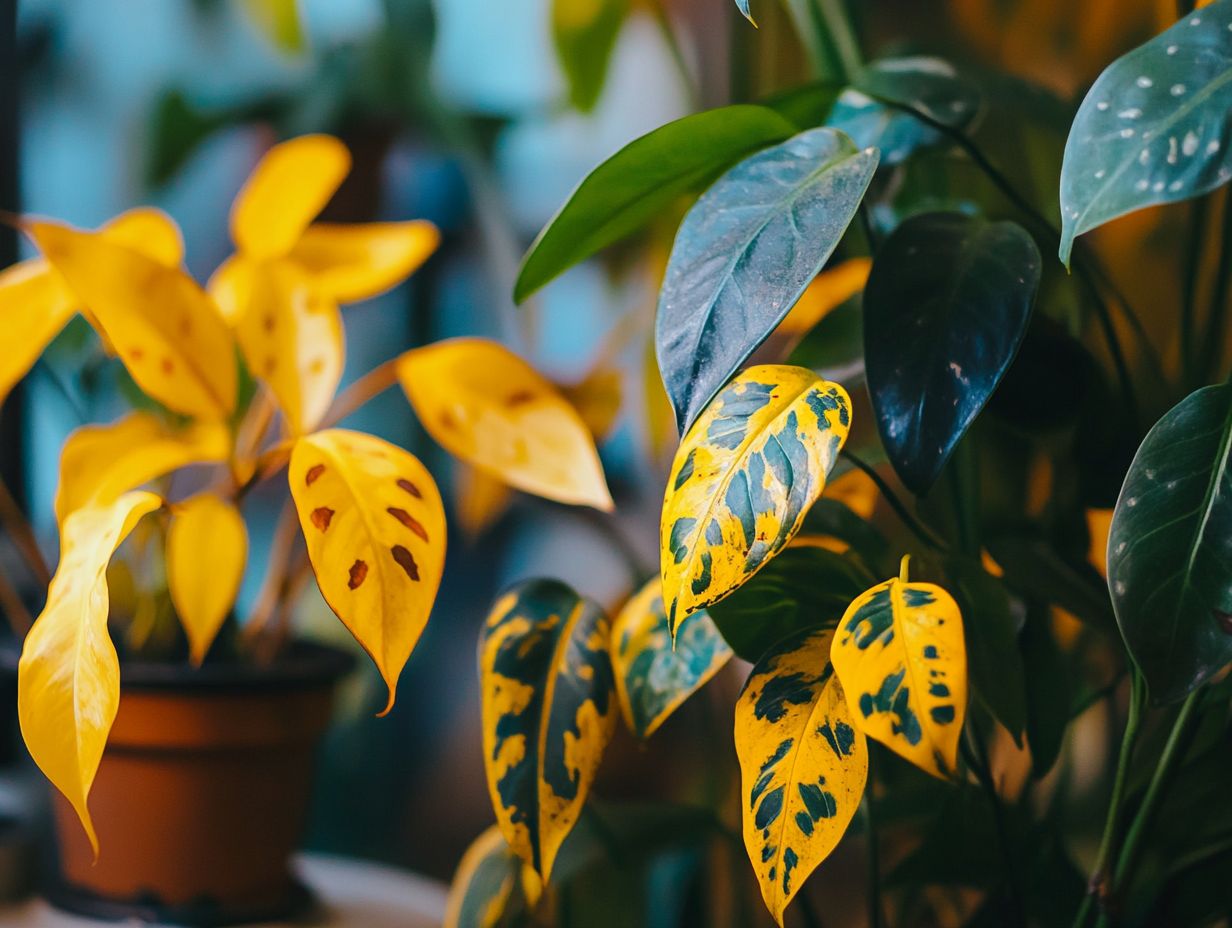
Preventing plant problems is crucial for achieving success in indoor plant care. It requires a blend of refined techniques and keen environmental awareness.
By ensuring your houseplants receive the optimal amount of sunlight, maintaining the right humidity levels, and establishing a consistent watering routine, you can significantly minimize the risk of issues like yellowing leaves and pest infestations.
When you take the time to understand the unique needs of each plant species, you can cultivate a thriving indoor environment that showcases your botanical prowess.
Preventive Care for Healthy Plants
Keep your watering schedule regular for thriving plants! This means ensuring they receive enough sunlight for optimal growth and monitoring humidity levels to prevent fungal diseases. By taking these actions, you not only elevate your plant care game but also reduce the risk of unsightly issues like yellowing leaves and pesky flying bugs.
Regular inspections are key for catching potential problems early, allowing you to address any issues before they escalate. Adjusting light exposure is crucial too; different plant species have varying light needs, and giving them the right amount can significantly boost their overall health.
Adopting proper watering techniques ensures your plants receive just the right amount of moisture, fostering strong root development.
For pest management, integrating treatments like neem oil or insecticidal soap offers a natural approach that effectively targets troublesome insects while keeping your plants safe. Together, these strategies create a solid foundation for a thriving indoor ecosystem that you can be proud of.
Treating Common Plant Problems
Addressing common plant problems requires a keen understanding of the specific issues plaguing your houseplants and implementing suitable solutions to rejuvenate their health.
For instance, if you notice yellowing leaves, consider adjusting your watering practices or enriching the soil with essential nutrients. In the case of dropping leaves, enhancing humidity levels or dealing with pest issues can help.
You can manage fungal diseases like root rot and powdery mildew with natural remedies like neem oil or insecticidal soap, ensuring your plants thrive in their optimal environment.
Effective Solutions for Common Issues
Finding the right solutions is vital for keeping your plants happy! Whether you re tackling pests like those pesky little flying bugs or aphids, or dealing with fungal diseases such as powdery mildew, reaching for insecticidal soap or neem oil can offer significant relief. Recognizing the signs of overwatering early is key to preventing root rot and ensuring your plants bounce back quickly.
Understanding the types of pests that might invade your greenery is the first crucial step in effectively combating these nuisances. For instance, when you’re up against aphids, a gentle spray of soapy water can suffocate them. It’s vital to conduct regular inspections afterward.
In the case of fungal infections, applying a solution of baking soda or specialized fungicides to affected leaves, typically every seven to fourteen days, ensures thorough coverage.
Act now to prevent further issues and keep your indoor garden blooming! Promoting good air circulation and avoiding wet foliage can significantly reduce the chances of recurrence, allowing your indoor garden to flourish beautifully.
Resources for Further Assistance
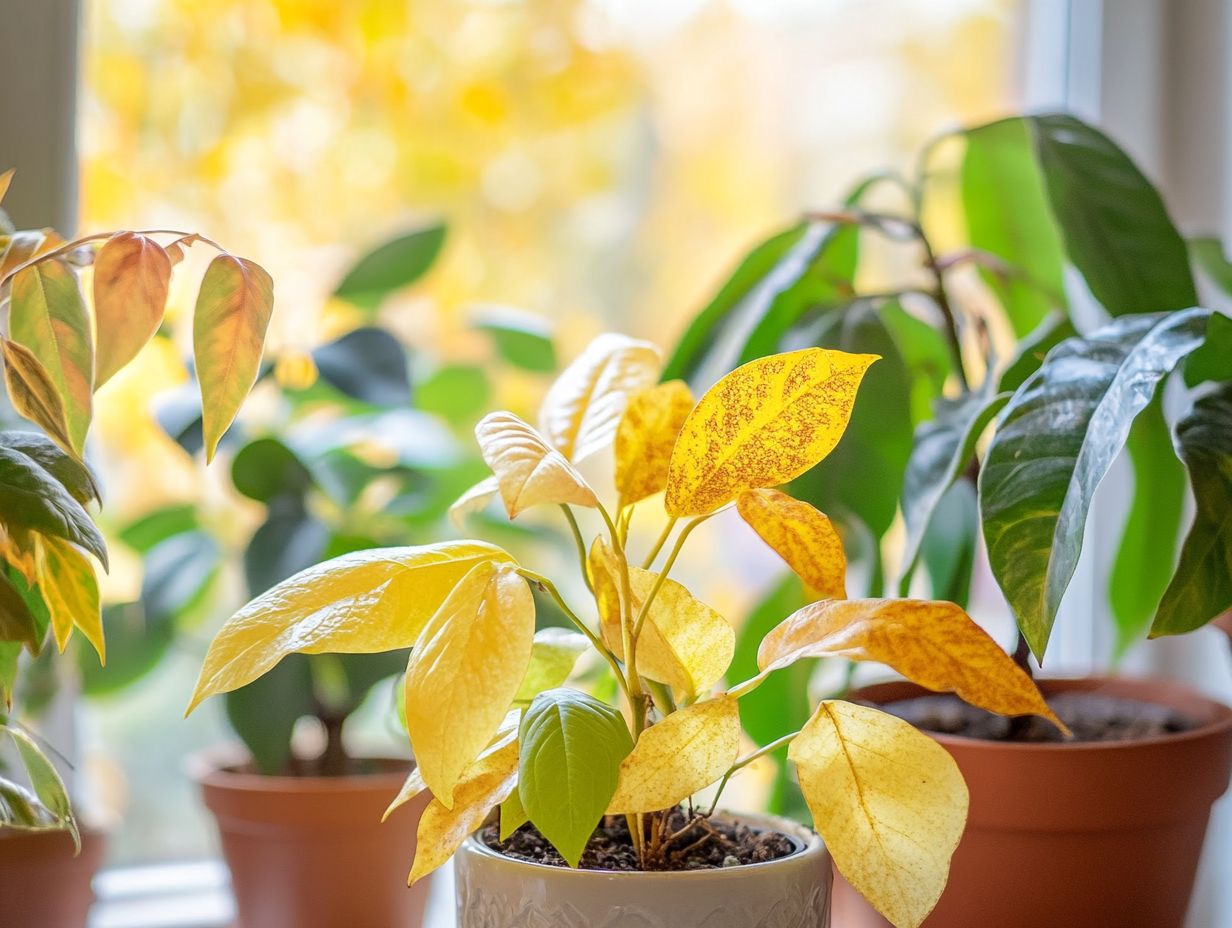
If you re looking for extra support in plant care and troubleshooting, a variety of platforms can offer you invaluable assistance in nurturing your houseplants.
Garden centers and plant shops stand out as excellent resources, providing expert advice and products designed to meet the specific needs of your plants.
Books and articles are your best friends in learning how to care for your plants! Esteemed authors such as Sydney Price and David McKinney can guide you in understanding plant health and effective treatment techniques.
Where to Find Help and Additional Information
Finding help with plant care is easier than ever with so many resources available online and offline.
Local garden centers provide practical help and tailored advice. Community workshops and gardening clubs offer invaluable learning opportunities and a chance to connect with fellow plant lovers.
Online platforms like social media groups and specialized gardening websites are treasure troves of articles and instructional videos for every skill level.
To maximize these resources, seek reputable sources and engage in discussions. This way, you ll gain insights from others experiences.
By diving into the community, you build a supportive network and access shared tips that elevate your plant care journey.
Frequently Asked Questions
What are some common plant problems and how can I identify them?
Common plant problems include wilting, yellowing leaves, and pests. Identify these issues by closely examining your plants for signs of damage or discoloration.
How do I deal with pests on my plants?
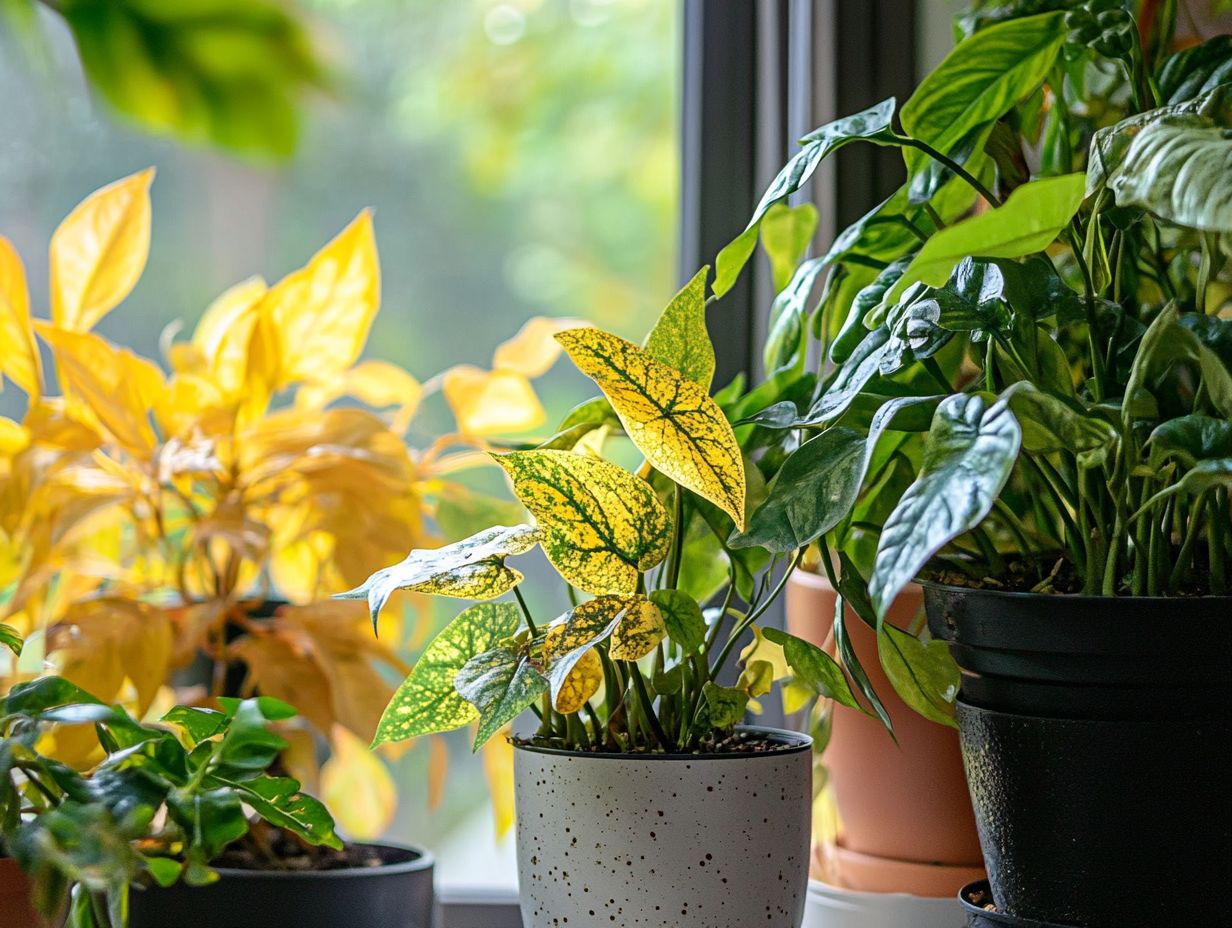
Pests can harm your plants, but you have several options to combat them. Use natural methods like neem oil or a natural pest control option made from tiny fossilized sea creatures, or opt for chemical pesticides if the infestation is severe.
Regularly check your plants for pests to catch any issues early.
Why are my plants wilting?
Wilting can be caused by over or under watering, lack of nutrients, or disease. Check the soil moisture level, provide proper fertilization, and inspect for signs of disease.
What should I do if my plant’s leaves are turning yellow?
Yellowing leaves may indicate over or under watering, nutrient deficiencies, or pests. Ensure proper watering, fertilization, and inspect for pests to revive your plant’s health.
How can I prevent common plant problems?
Preventing common plant problems starts with proper care and maintenance. Water your plants regularly and give them the necessary nutrients.
Watch for signs of pests and diseases, and address them quickly! Watering issues, like too much water, can lead to problems such as powdery mildew and root rot.
Avoid over or under-fertilizing your plants, as this can cause issues too.
Where can I find more information on common plant problems?
Many online resources, gardening books, and local garden centers offer information on common plant problems and solutions. Joining a gardening community or consulting a professional gardener can provide valuable insights.

